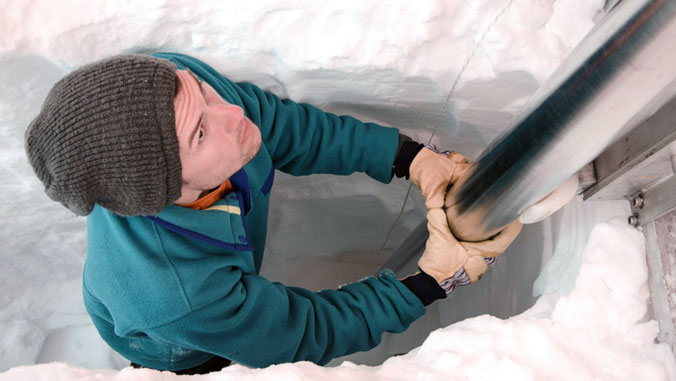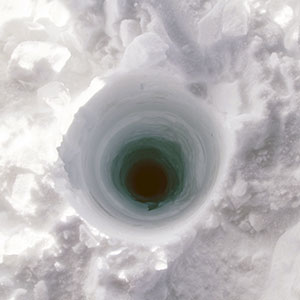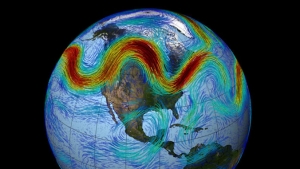
How the position and intensity of the North Atlantic jet stream has changed during the past 1,250 years is the focus of new research co-authored by a University of Hawaiʻi at Mānoa scientist. The findings, published in the Proceedings of the National Academy of Sciences, suggest that the position of the jet stream could migrate outside of the range of natural variability by as early as the year 2060, with potentially drastic consequences for weather, climate and societies on both sides of the Atlantic.
Familiar to air travelers flying between North America and Europe, the North Atlantic jet stream is the ribbon of prevailing westerly winds that impacts flight times, and also weather and climate across eastern North America and western Europe—accounting for between 10% and 50% of year-to-year variability in precipitation and temperature in both regions.
Ice cores hold clues to the past

The research team, led by Matthew B. Osman, a postdoctoral research associate at the University of Arizona, collected glacial ice core samples from nearly 50 sites spanning the Greenland ice sheet. Because the North Atlantic jet stream impacts weather and climate across Greenland, the researchers were able to reconstruct changes in the jet stream dating back to the eighth century by analyzing year-to-year variations in the amount of snowfall archived in the ice cores, as well as the chemical makeup of the water molecules comprising those annual snow layers.
“Despite its critical importance, we have only a few decades of direct observations of the North Atlantic jet stream,” said Sloan Coats, study co-author and assistant professor of Earth sciences in the UH Mānoa School of Ocean and Earth Science and Technology (SOEST). “This has greatly limited our understanding of how and why the jet stream changes, particularly over longer periods of time. Glacial ice cores in Greenland provide a remarkable archive of how the North Atlantic jet stream has changed over the last 1,250 years, allowing us to better understand why.”
The team was able to match some changes in the jet stream to historical weather-related calamities. For example, during a famine that gripped the Iberian Peninsula in 1374, the jet stream was situated unusually far north, bringing dry conditions. Similarly, two famine events in the British Isles and Ireland in 1728 and 1740 coincided with years that the jet stream blew at nearly half its usual intensity, dramatically cooling temperatures and reducing precipitation. The latter of these events, in 1740, is estimated to have cost the lives of nearly half a million people.
Impacts of jet stream

The team was able to match some changes in the jet stream to historical weather-related calamities. For example, during a famine that gripped the Iberian Peninsula in 1374, the jet stream was situated unusually far north, bringing dry conditions. Similarly, two famine events in the British Isles and Ireland in 1728 and 1740 coincided with years that the jet stream blew at nearly half its usual intensity, dramatically cooling temperatures and reducing precipitation. The latter of these events, in 1740, is estimated to have cost the lives of nearly half a million people.
The work reveals that natural variability has largely controlled the position of the North Atlantic jet stream to date. However, when combined with insights from model projections, it becomes clear that human caused warming could cause significant deviations from the norm. In particular, a northward migration of the North Atlantic jet stream under 21st century warming has the potential to render the jet stream significantly different from any other time in the last 1,250 years. Coats and his co-authors expect that any future shifts in the North Atlantic jet stream would also have dramatic implications on day-to-day weather and ecosystems, with trickle-down effects impacting national economies and societies. As with many of the most drastic consequences of human caused climate change, however, reducing emissions has the potential to avoid this outcome.
This research is an example of UH Mānoa’s goal of Excellence in Research: Advancing the Research and Creative Work Enterprise (PDF), one of four goals identified in the 2015–25 Strategic Plan (PDF), updated in December 2020.

